“Choose a motif to represent yourself,” said South African contemporary quilt artist Rosalie Dace (rosaliedace.co.za). In this extraordinary class called “Signs & Symbols” that I took at Quilt Surface Design Symposium four summers ago, Rosalie explained that even basic shapes can be used to express your essence. Circles and curvy, round shapes, for example, are intuitively feminine forms. Rosalie, hot as a teacher as well as quilter, frequently uses the sun of Durban, her hometown, in her work. Me, I tend to be pretty fruity. My body, I figured, brings the pear to mind, but I picked the pomegranate. The rich colors, the bulbous form, and that crown–it says diva to me.
I’ve just pulled out that class piece I worked on in 2007 and brought home to finish…but never got around to. In showing it to you here, the pressure is on to go back and make it ripen it to fruition! Please share a critical comment–plant a seed in my brain to help me organize and improve the composition, or to motivate me to just get it done! As a thank you, I’ll enter you into a drawing for my book, Unforgettable Tote Bags: 20 designs too cool to leave in the car.
NEWS FLASH: The amazing Pamela Allen of Canada just honored me with more than a mere crit, but a dynamic, digital rendition. Had to add right here, right now. Because it’s such a brilliant idea, with potential to work in many other applications–your work, perhaps! What Pamela did was to adapt elements from my piece and echo and elongate them for unity, cohesiveness, and flow.
Pamela pitches pomegranates to perfection!
I can’t wait to play with this concept, using my cut and paste, er, pin way of working. Now, back to the blog.
Ahh, the mystery, the history of this fantastical fruit!
Did you know…?
- The forbidden fruit in the Garden of Eden is thought to have been a pomegranate. (Since when did you ever see apple trees in the Middle East, the cradle of civilization?)
- Ancient Egyptians regarded the pomegranate as a symbol of prosperity and ambition. (A few of these fancy fruits–to dry and set out in a big bowl–is gonna set you back quite a few dollars, so you better have a good amount of disposable income for this showy decorating effect.)
- In India, for generations, the rind of the fruit and the bark of the pomegranate tree has been used to treat diarrhea, dysentery, and hemorrhoids; to stop nose bleeds; and, in combo with mustard seed oil, to tone skin and firm up sagging breasts! (Note to self: add pomegrates and mustard seed oil to the grocery list.)
- Jews have often used views of this fruit on coins, coronets, and to decorate the handles of the Torah scrolls. My people like to co-relate the many, many seeds with the many, many laws in the Torah (613–don’t ask me how many– er, how few I observe).
- All those multitudinous seeds means the pomegranate symbolizes fertility in many cultures. (Hey, I may only have one child, but let my publishing and quiltmaking efforts be fruitful!!)
- In paintings of Mother Mary or baby Jesus, pomegranates are shorthand religious symbols for Sandro Botticelli, and for Leonardo da Vinci, code.
- The French term for pomegranate is grenade. Soldiers noted the similar shape of early explosives and the name stuck. (Can I maybe get a little credit for using of pomegranates in my work as an anti-war statement? Even if I didn’t know about this at the time I began?)
- To “seed” a pomegranate, break pieces of seeds and pithy membrane and put in water. The pith will float, the seeds will not. Scoop up some seeds and sprinkle over a green salad. The sweet, juicy pulp is a wonderful enhancement. (And in moderation, the crunch of the seeds is not half bad.)
- You can make your own pomegranate juice or syrup (grenadine). I don’t though. After all, Pom comes in that great bottle, and you just need to pour a tiny bit of the dense grenadine slowly over OJ on ice for a very arty effect. Plus, a jigger of tequila turns it into a Tequila Sunrise. Cheers!
Here’s a plum offer: Mention other cool pomegranate facts, mythology, and recipes, and I’ll enter you into the drawing for my book, Unforgettable Tote Bags: 20 designs too cool to leave in the car.
Much more recently–last week, in fact, I was lucky enough to take a class with Judy Langille (judylangille.com) called “Cut, Slash and Tear Your Way to Innovative Fabric Design.” It was, conveniently enough for me, held in my local area as part of the FiberPhiladelphia 2012 extravaganza. Judy had us students using silk screens and making thermofaxes, but freezer paper was the key tool.
Determined to avoid adding to my stash and coming home with yet another unfinished class project, I began with one of my grandmother’s linen dresser scarves. Hemmed and edged with tatted lace, it dictated the parameters and the old fashioned, feminine mood of the finished piece. Following Judy’s cue, I ironed freezer over the whole linen rectangle, and then cut out various pomegranate shapes to color with dyes. Then, I masked only the pomegranate shapes, and went to work on the background. Longtime buddy Sammie Moshenberg’s photo of a dune fence, taken during a joint family beach vacation in 2007, provided the repeat motif. Fed through the thermofax, the image gave me great visual texture I applied in yellow, tan, and green paint. In addition, I utilized some of Judy’s thermofaxes (rings, a gridded dot designs) and my own– well, text cribbed from the Internet, the definition for pomegranate, printed out in a florid script font. Plus a few dots and rings from stamping with a pencil eraser.
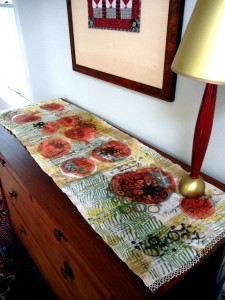 The best thing about my class project? It’s done!
The best thing about my class project? It’s done!
Hey, do you ever do surface design, applique, quilting, or embellishment over vintage linens? If so, leave a comment and tell me about it, or point to your website or blog for a picture. Would you believe it, you’ll be entered into a drawing for my book, Unforgettable Tote Bags: 20 designs too cool to leave in the car. It’s a green book, so I’m prepared to give away 22 copies by Earth Day, April 22. (Note: Flat rate postage to be charged if winners reside outside the contiguous USA.)
Remember, I’ll be pleased as, well, pomegranate punch if you leave a comment!


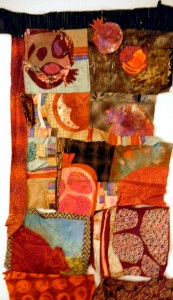
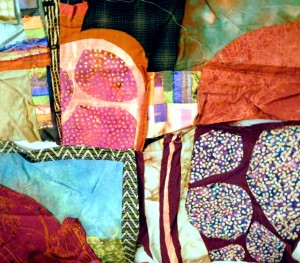
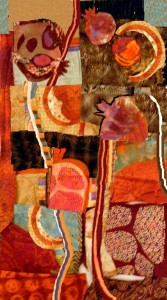
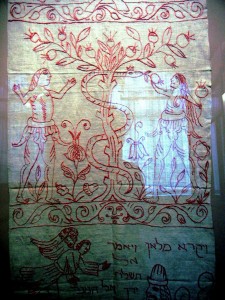
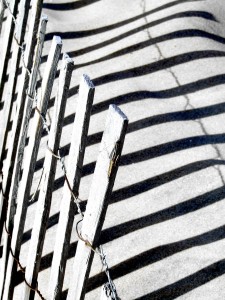
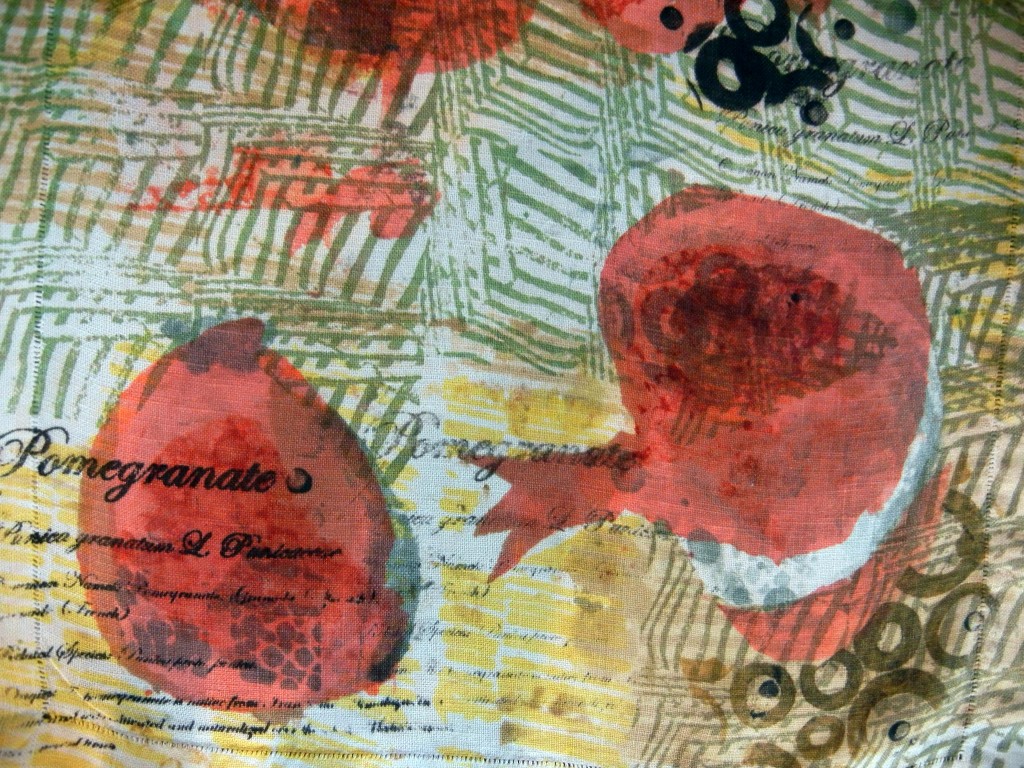
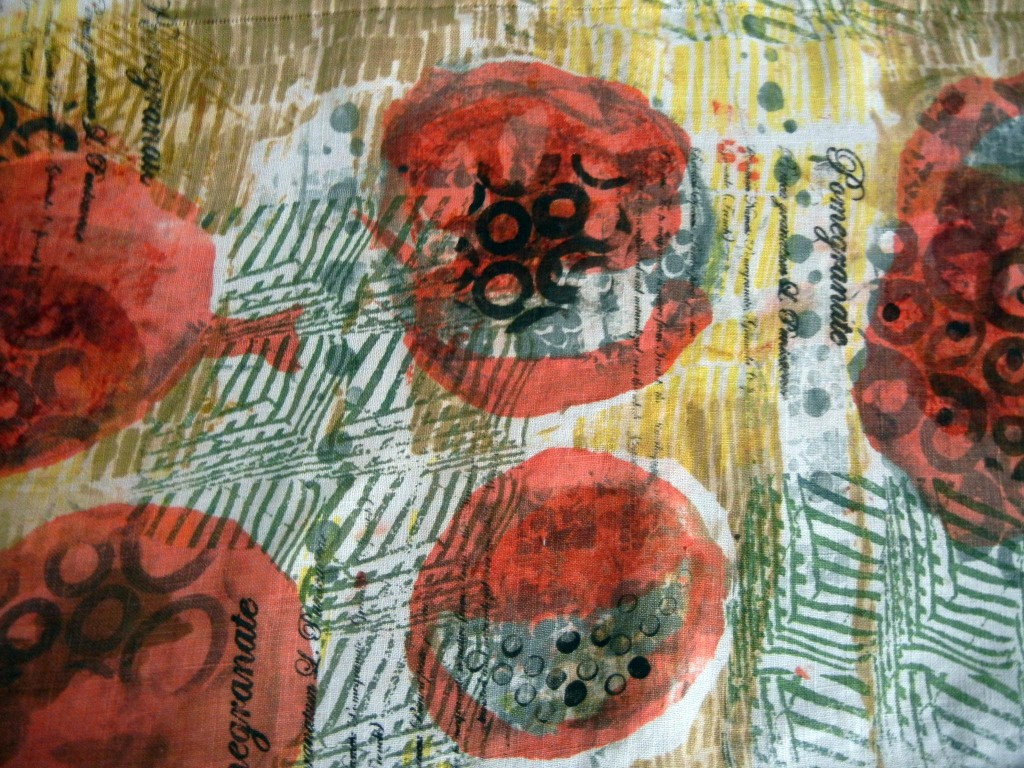
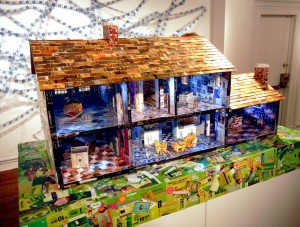
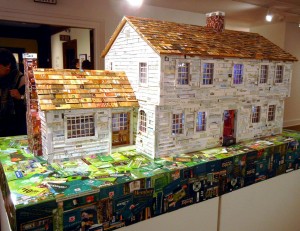
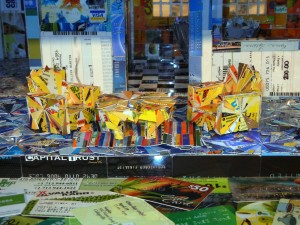

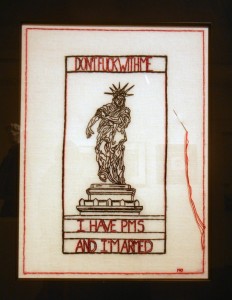
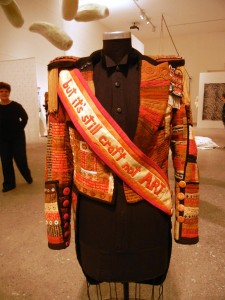
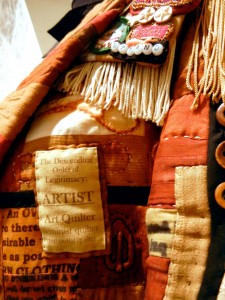
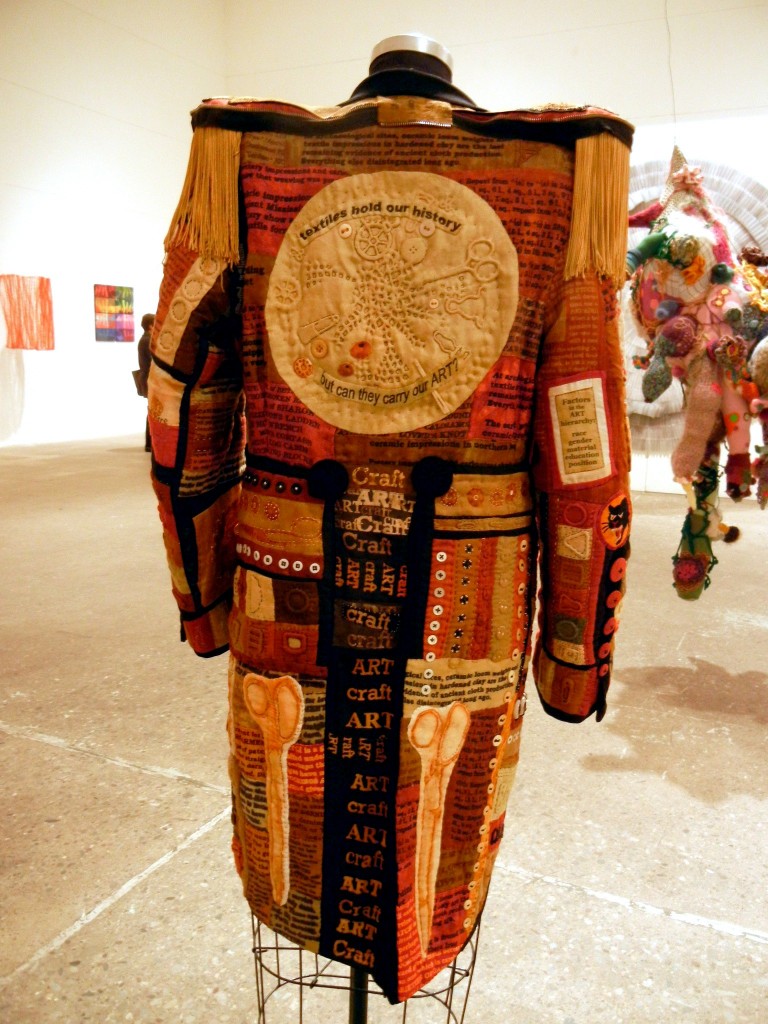
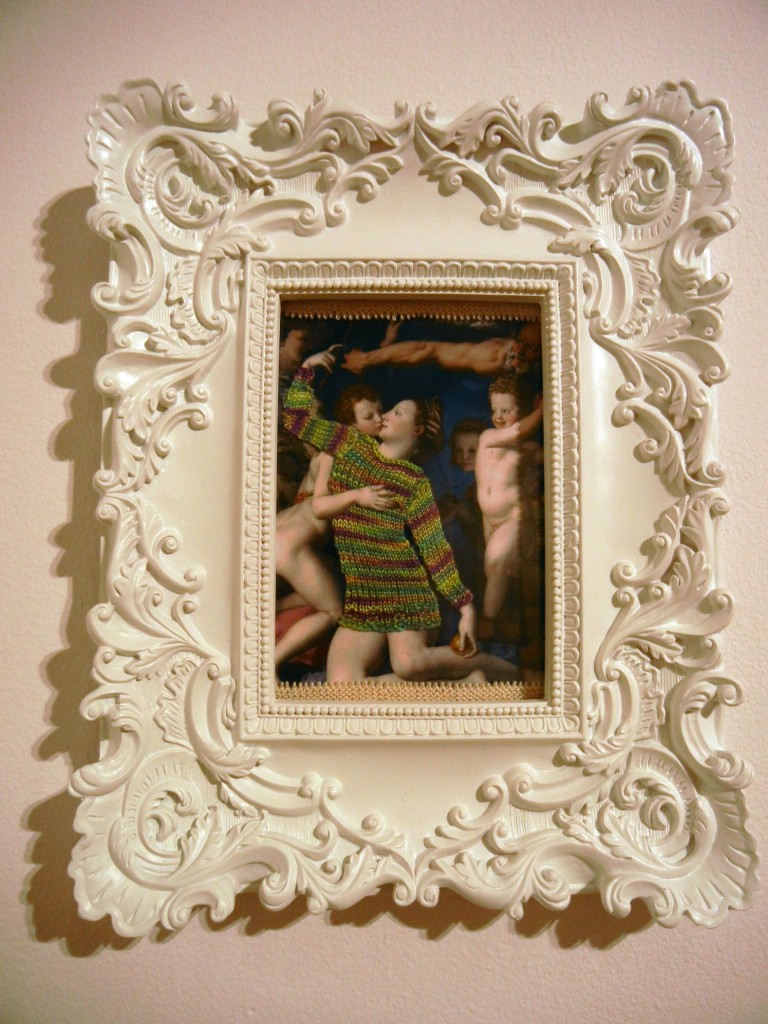
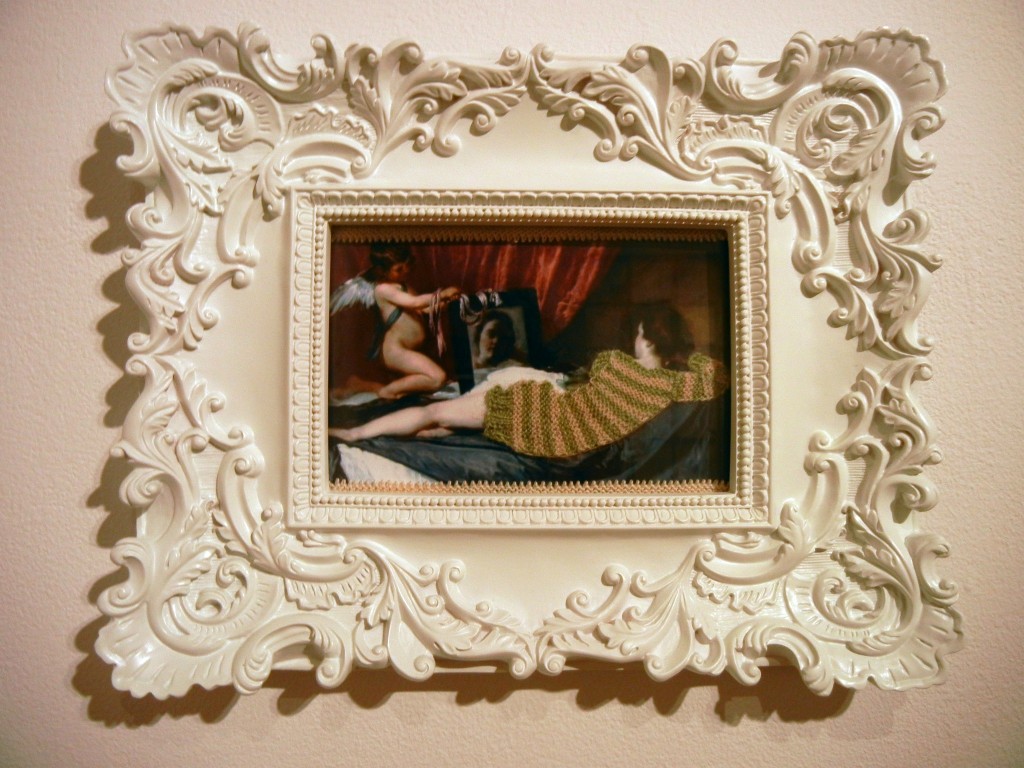
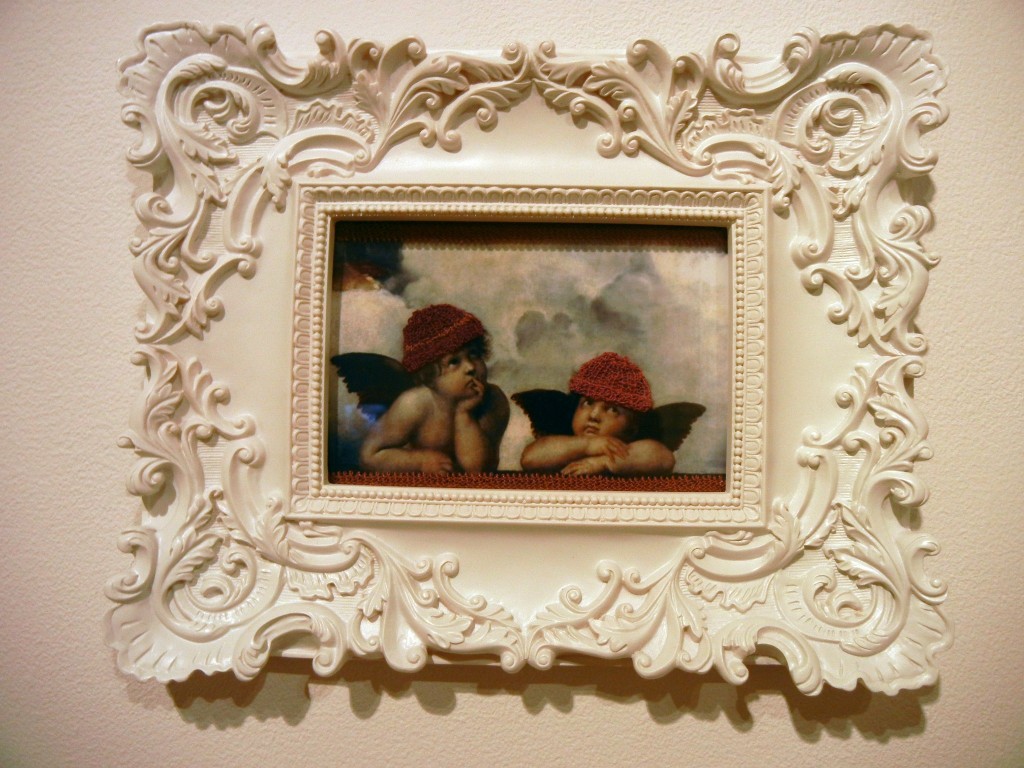
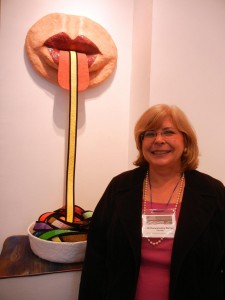
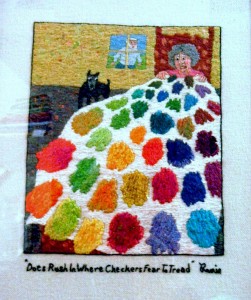
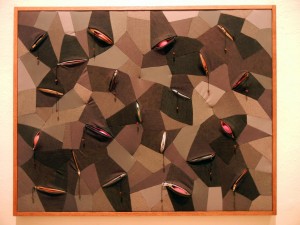
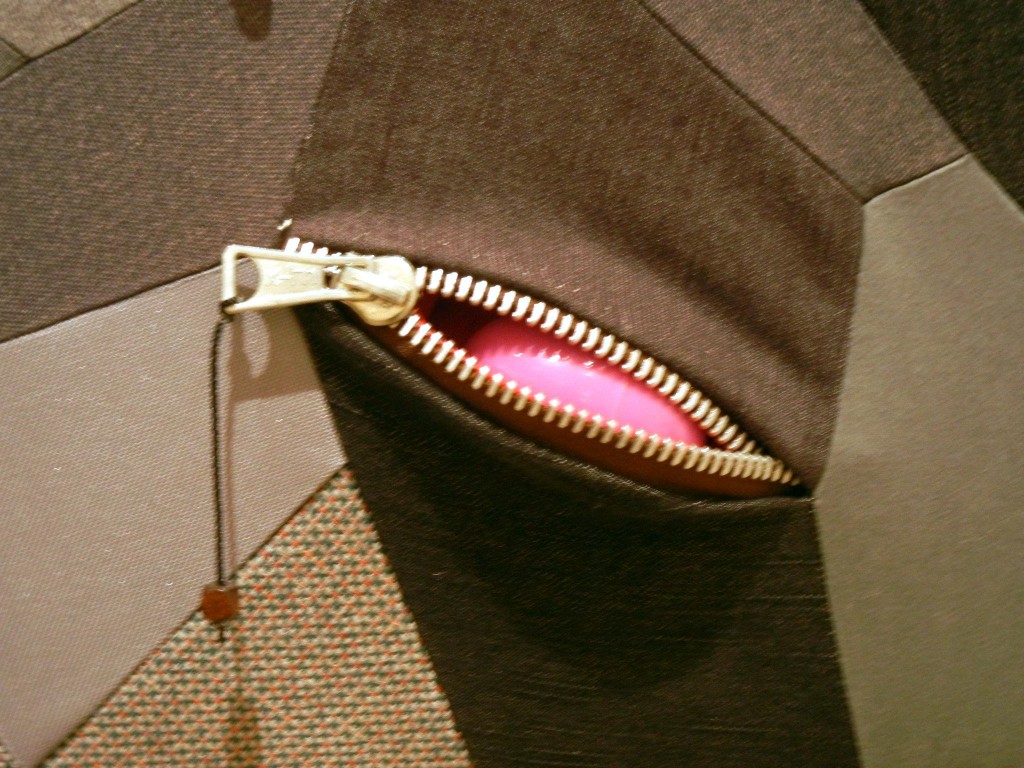
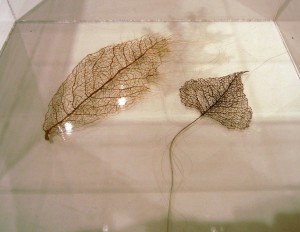
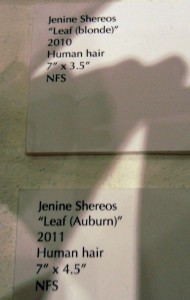
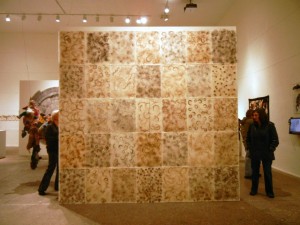


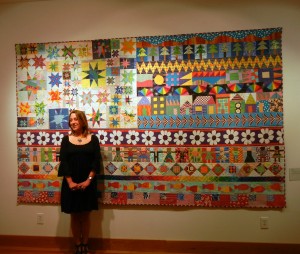
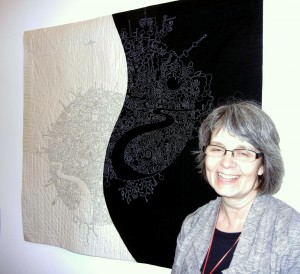
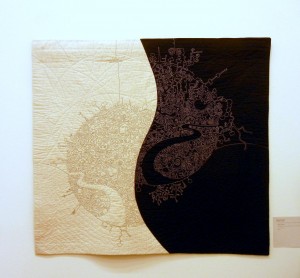
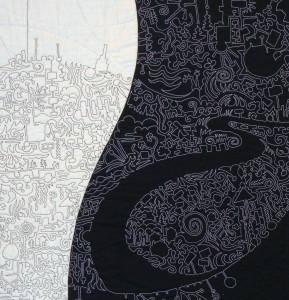

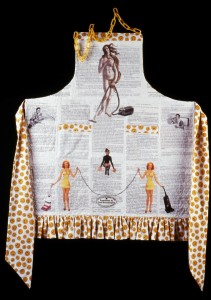
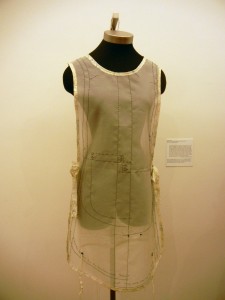

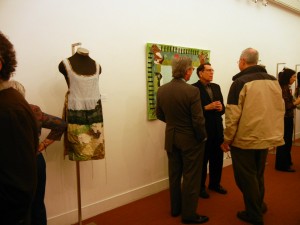
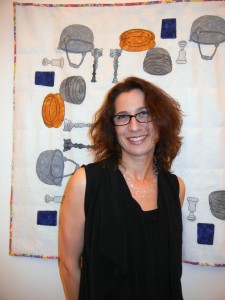

I love pomegranates too. We used to call them Chinese apples when I was a kid growing up on Long Island. So the only thing I can add is a slightly different view of the 613 seeds – that is the number of mitzvot we have to do before we die (as Jews). Would love to have a copy of your new book.
YOU WON, Cheryl! Read today’s blog. And sometime in the future, I’ll be looking out for a pomegranate tile patchwork repeat motif!!–EL
Eleanor…I like the class project…the printed lines pattern with the pomegranate printed over is a great look. The texture of the lines gives a nice, strong background. Looking at the process and the resulting table runner gives me a bit of a push to do some surface design with printing and dies….
Kristin
YOU WON, Kristin! Read today’s blog–EL
Eleanor,
I love the finished pomegranate piece. My newest goal is to try some thermofax screens, and I have several of my mom’s linens to print and dye with. Thanks for the inspiration!!
Karol
YOU WON, Karol! Read today’s blog–EL
Eleanor,
The decorative tops of the torah scrolls were usually fashioned after the pomegranate shape. Also the robes of the “ancient high priests” had bell shaped pomegranate decoration. Enjoyed reading your assessment of Phila Fiber exhibit by the Judaic artist. I have a collection of aprons. Thanks, Jan
YOU WON, Jan! Read today’s blog–EL
April 13, 2012 at 3:21 pm
In her book But God Remembered, Sandy Sasso writes a midrash about Lilith, who supposedly was Adam’s first wife, and talks about how Lilith and Adam loved to play catch with the pomegranates. She writes “ When they were tired of playing, Lilith would take the pomegranates and split them open. Adam would scoop out the juicy seeds. Then Adam and Lilith would sit by the river that flowed through the garden and suck on the pomegranate seeds together”.
Barbara
Reply
YOU WON, Barbara! Read today’s blog–EL
I took that same class with Roasalie Dace 2 years after you did! I still have my unfinished project. Every once in a while I see it in the drawer and think I should finish it, but there are always other projects already on the design wall or sewing table. Some day. I like what Pamela did with yours. Her eye is right on. But, of course, we knew that already! About pomegranates – the dried skin of the fruit can be used as a natural dye.
YOU WON, Lynn! Read today’s blog. And join the Rosalie Dace fan club!–EL
If only I could add to this discussion. I have learned a lot about pomegranates and thank you and the other responders. Please enter me anyway in the drawing for the book! I’ll never look at poms the same again.
YOU WON, Linda! Read today’s blog–EL
I love the idea of a pomegranate as the symbol for a Jewish quilter. In your piece, while I cannot do anything like Pamela did, I love the open pom better than the closed ones–much more innovative and unusual. And I never knew that the grenadine syrup I drank as a child and which went on our grapefruits was in fact pomegranate!
YOU WON, SUSAN! Read today’s blog–EL
I always think of the pomegranate as a Jewish fruit – LOL. And of course, Adam and Lilith played catch with pomegranates — no apples grew in the desert. The fruit Eve offered was a pomegranate, not an apple. Did anybody notice that the word for apple in French is “pomme”?? Hmmm…
BTW – your piece done in Judy’s class is gorgeous! Didn’t you just love working that way? I could not survive without my Thermofax.
YOU WON, Rayna! Read today’s blog. And someday, I’ll be taking a class with YOU!–EL
I love the pomegranate fruit! You are very creative!
Thanks!! You’ve won!
Have I ever? Why yes! I just took a vintage cotton white tablecloth with embroidered lambs on two corners and, cutting out a 9 x 9 square with the lambs included, placed them into a baby quilt for my new granddaughter. Micro-quilted around the embroidery made it stand out and I am so happy with how adorable the old vintage pieces mixed in with modern fabric look in that quilt.
Sounds cool. BTW, YOU WON, Lydia! Read today’s blog–EL